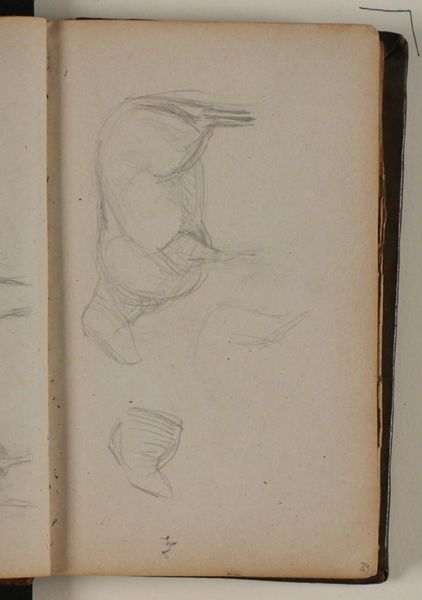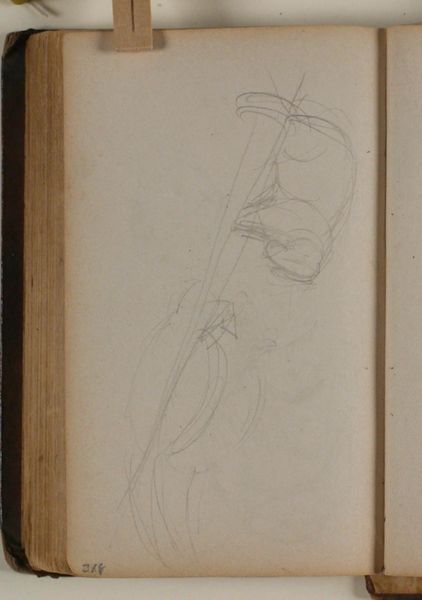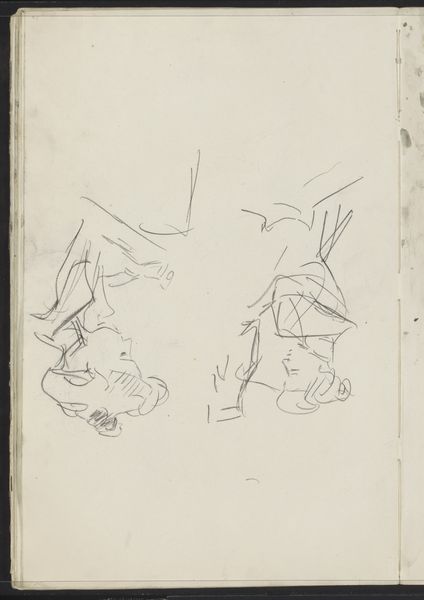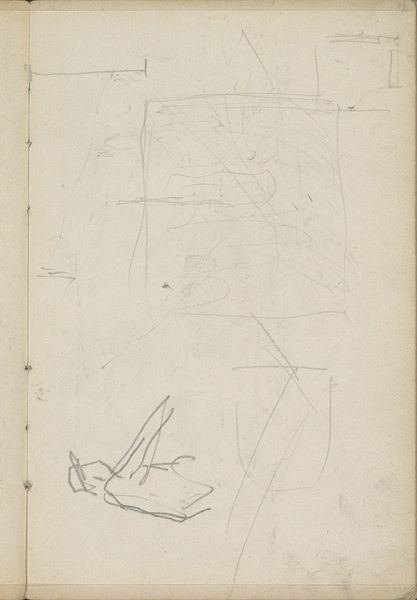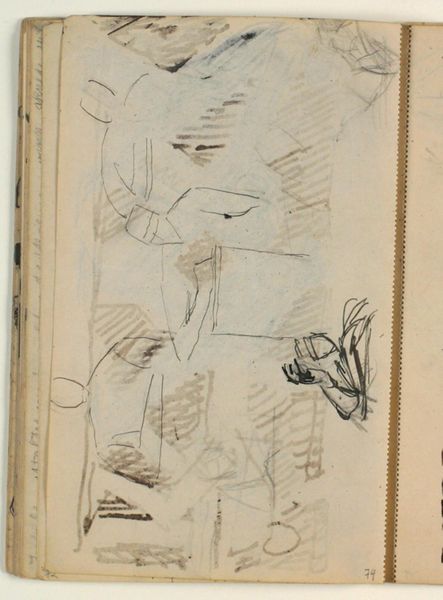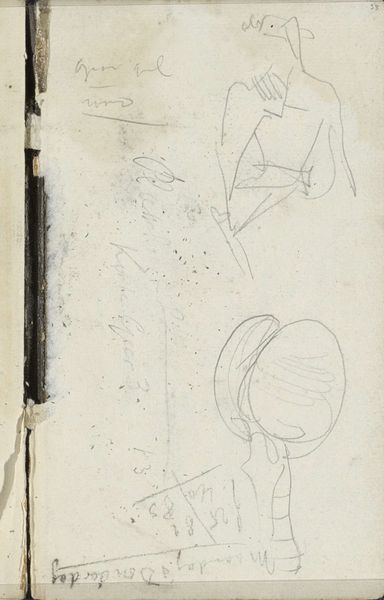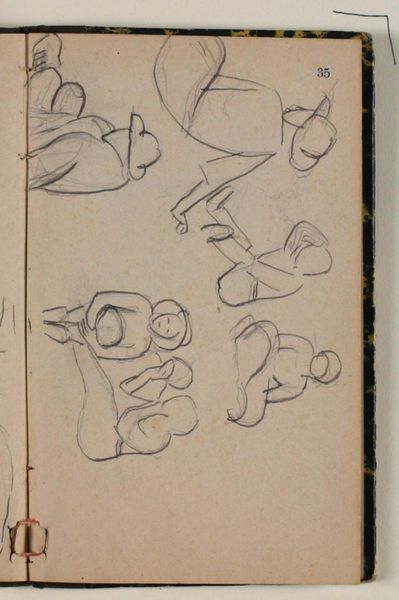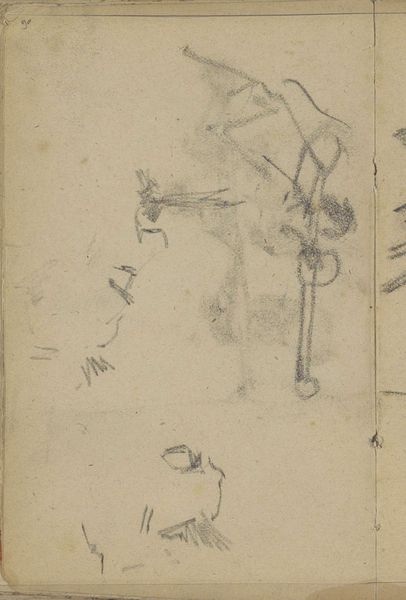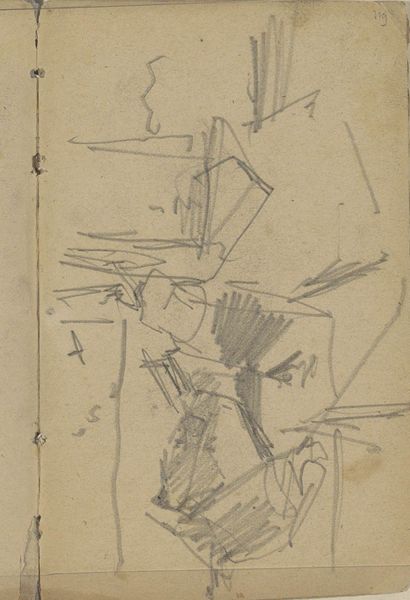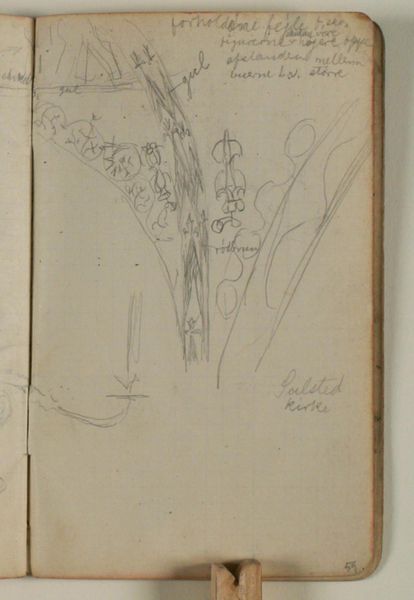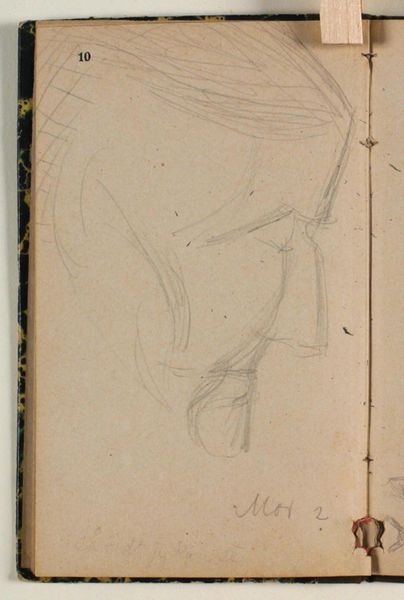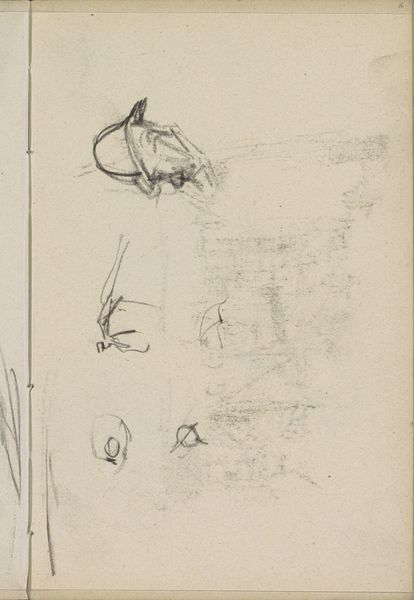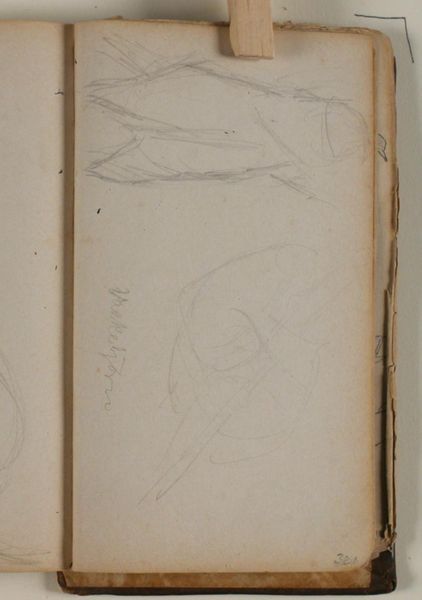
drawing, paper, pencil
#
drawing
#
figuration
#
paper
#
coloured pencil
#
pencil
Editor: Here we have Niels Larsen Stevns' "Figurskitser", created sometime between 1932 and 1935 using pencil and colored pencil on paper. It feels incredibly fragmented, almost like a series of incomplete thoughts or observations. What strikes you when you look at it? Curator: I see a critical deconstruction of form, particularly human form. The fragmented nature, almost cubist in its abstraction, pushes us to consider how bodies were being represented, and perhaps *misrepresented*, in the interwar period. Do you see any recurring motifs, perhaps suggesting particular bodies or narratives being explored? Editor: I notice the recurring circular shapes, and the lines that sometimes imply figures, but it's all very abstract. Perhaps these are preliminary sketches for larger works. What social factors might have influenced Stevns' artistic choices during this time? Curator: The rise of fascism and anxieties about societal control. Stevns may be subtly protesting these oppressive forces through the act of fragmenting and re-imagining the human form. It’s a period of political and social instability. Art becomes a tool to critique established powers, right? Can we consider this fragmentation as an act of resistance? Editor: That's a fascinating perspective. So, you're saying that these abstract forms are not just artistic exploration, but potentially a subtle form of political commentary? Curator: Precisely! It is vital to consider this artist within the political context. What kind of narrative could this series of drawings provide about gender and power dynamics during the interwar period? It offers insights into how people viewed themselves. Editor: I had never considered it that way before. Thanks for providing new insights on the possible context and influence that guided the artist. Curator: Absolutely, and your initial observations were very perceptive too. This piece opens us to complex perspectives regarding artistic integrity and how identities were expressed and challenged during this crucial time in the 20th century.
Comments
No comments
Be the first to comment and join the conversation on the ultimate creative platform.
